Samsung Galaxy Note 3 vs Samsung Galaxy Note 2
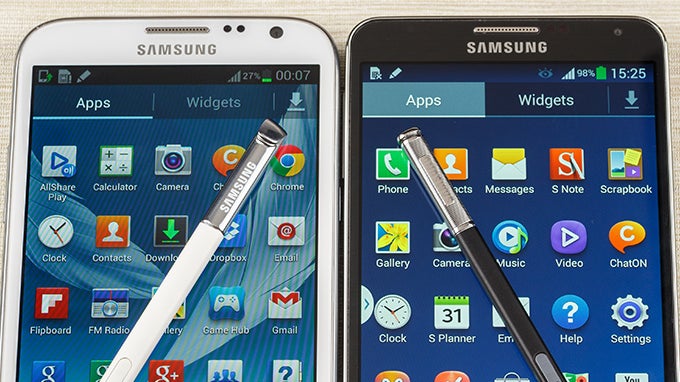
Introduction
Anyone who has already gone through our Samsung Galaxy Note 3 review knows that the smartphone ranks among the best ones money can buy. It is an embodiment of high-end technology, and even though it doesn’t come cheap, it offers quite a lot of bang for its buck, not to mention that the hardware tucked under its hood makes it quite future-proof. And yes, as you might guess, the Samsung Galaxy Note 3 is indeed better than its year-old predecessor, namely the Samsung Galaxy Note II. But what exactly makes it better and what has its maker improved upon in order to impress us this time around? And most importantly, is the Note II still worth holding on to now that its third iteration is out? Read on to find out.
Design
We can only commend Samsung for treating its phablet to a solid hardware upgrade without that having a negative effect on the device's proportions. The width and height of the Galaxy Note 3 come really close to those of the year-old Note II (151.2 x 79.2 x 8.3 mm for the former vs 151 x 80.5 x 9.4 mm for the latter), with the new model being only slightly taller, yet a hair narrower and noticeably thinner. Moreover, at 168 grams, the Samsung Galaxy Note 3 is 14 grams lighter than the Note II, and is a tad easier to handle as a result.
Of course, one can simply forget about using the Samsung Galaxy Note 3 single-handedly as it is still as challenging to wield as its predecessor. But at the end of the day, that's a common trait for all phablets, so we can't complain, especially when we're compensated with that huge, gorgeous touchscreen. While the Samsung Galaxy Note II and Note 3 fit in larger pockets, they are quite bulky and some users will find them uncomfortable to carry around.
With its body made of glossy plastic, the Samsung Galaxy Note II looks and feels rather ordinary, especially now that we've grown tired of seeing the same design being rehashed over and over again. The Samsung Galaxy Note 3 can't be described as a luxury device either, but it feels better to the touch with its leather-like back plate. Unlike its glossy counterpart, the Note 3 resists fingerprints well and has a lot more grip thanks to its textured surface.
Both the Samsung Galaxy Note 3 and the Samsung Galaxy Note II come with removable back covers, underneath which reside the slots for their SIM and microSD cards. Their batteries are also found there and are user-replaceable.
Physical buttons on both smartphones are arranged in an identical manner, with a physical “Home” key below the screen, accompanied by capacitive “Menu” and “Back” buttons. The power and volume buttons are placed on the right and left sides of these devices. We can gladly say that all buttons are easy to reach and operate. It is also nice that the capacitive keys on the Note 3 can be operated with the S Pen's tip. Speaking of which...
S Pen
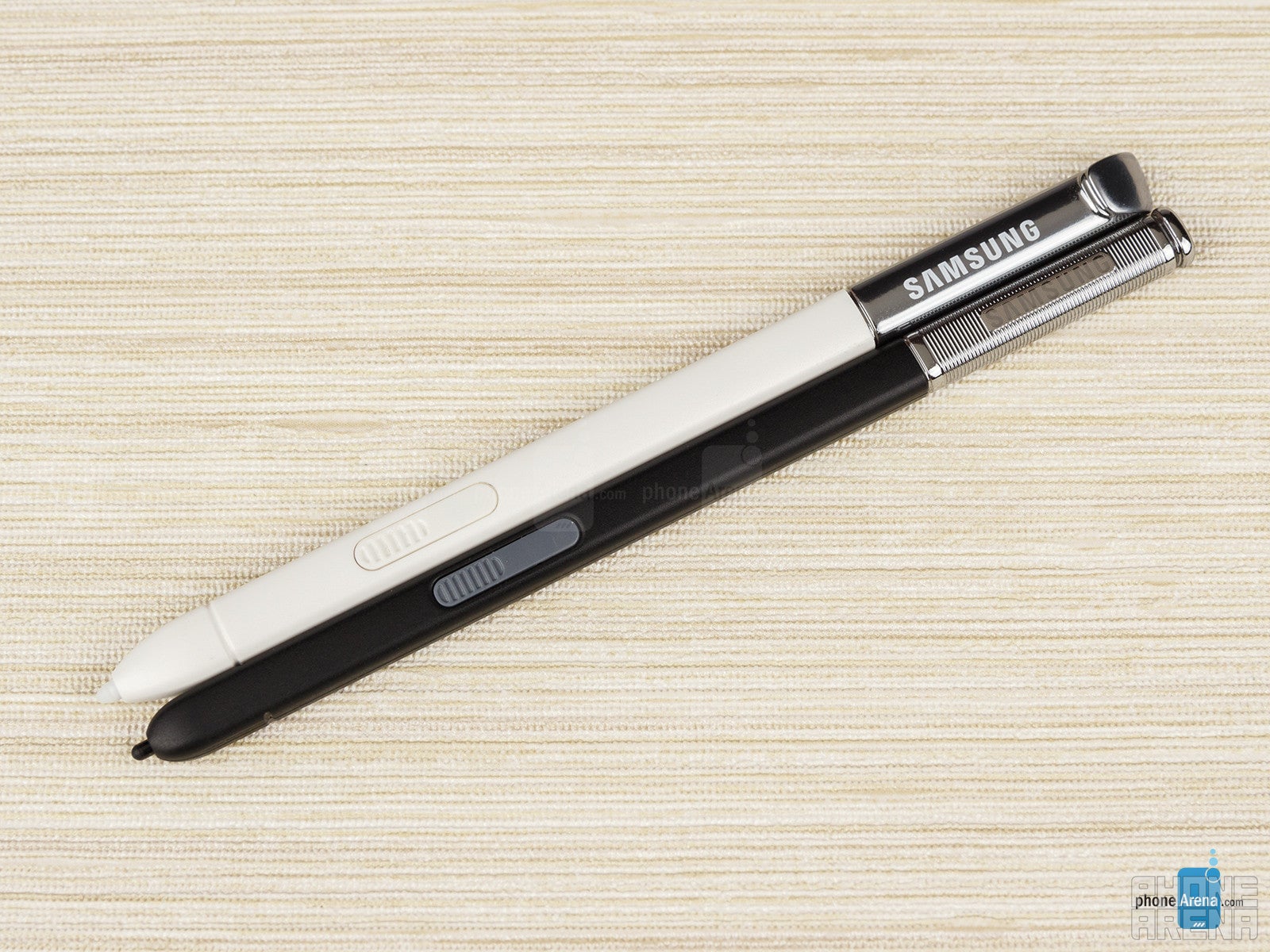
Display
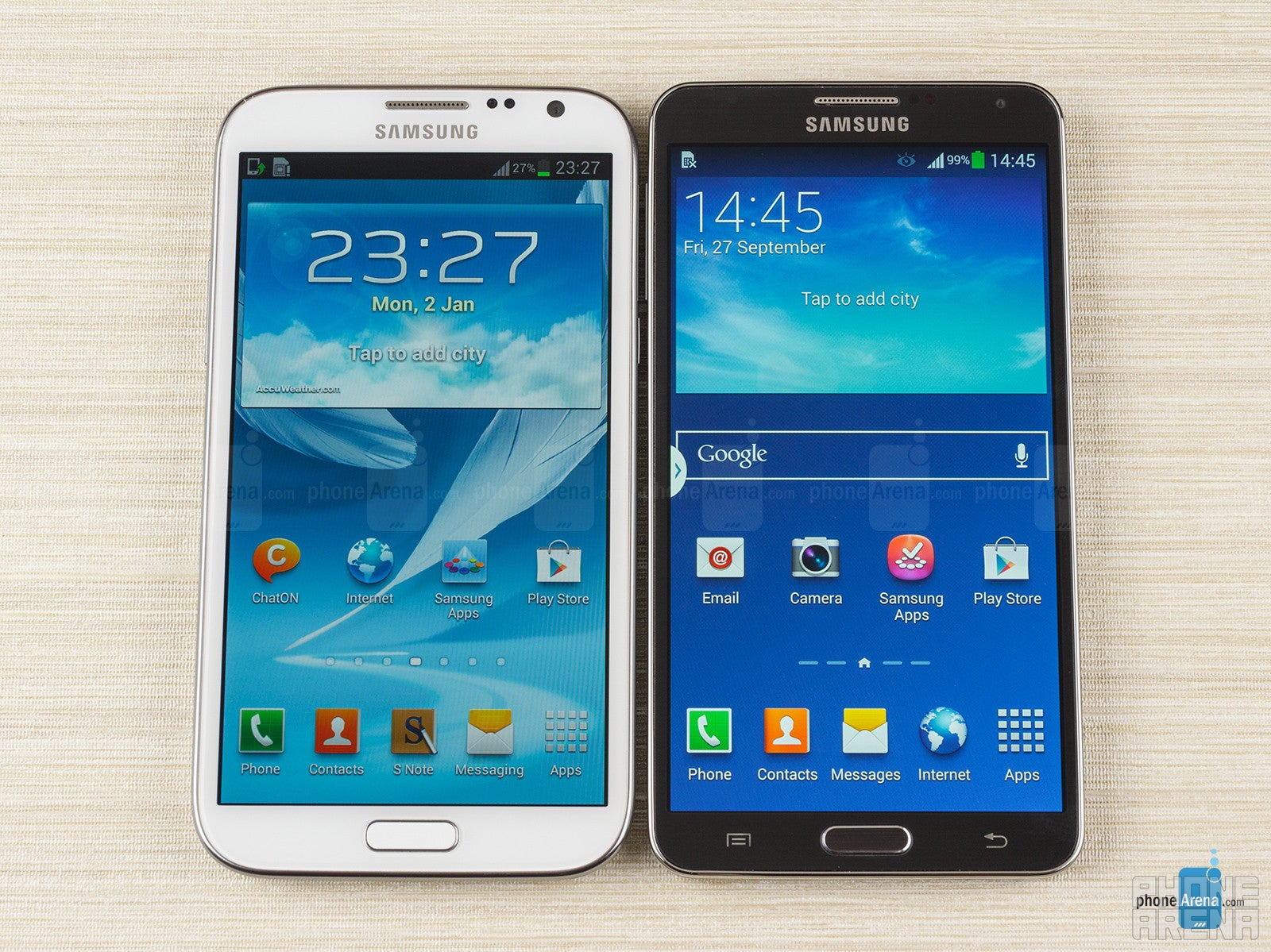
The slightly smaller, 5.5-inch Super AMOLED screen on the Samsung Galaxy Note II sure looked great when we first saw it in person. But with a resolution of 720 by 1280 pixels (resulting in a density of just 265 ppi), it is unable to deliver the same level of smoothness and detail achieved by the Note 3's display. Color representation is, again, a bit exaggerated and somewhat less accurate, but it can be adjusted to a more natural setting via the options menu.
One more thing that sets these two smartphones' screens apart is their brightness output. The Samsung Galaxy Note 3 is relatively easy to use outdoors since its display shines quite brightly, while the Note II looks much dimmer when exposed to the sun's rays. Viewing angles are also better on the Note 3 as there's little color degradation when it is looked at from the side. The display on the Note II, on the other hand, turns blue even at moderate angles – not a deal breaker, but a flaw nonetheless.
Samsung Galaxy Note 3 360-Degrees View
Samsung GALAXY Note II 360-Degrees View
Interface
The Samsung Galaxy Note 3 comes with the latest Android version available – 4.3 Jelly Bean. The Note 2, on the other hand, is still lagging behind as it runs Android 4.1.2, but an update to 4.3 is currently being brewed and will hopefully be released in the very near future.
As is typical for Samsung's Android devices, the stock Android UI on the Galaxy Note 3 and Galaxy Note II has been replaced with the company's solution known as TouchWiz. That is one of the better-made custom UIs found on today's smartphones, heavily accenting on functionality and on offering features not present on handsets by competitor brands. And to no surprise, the interface variant found on the newer handset is richer when it comes to the number of features and extras loaded onto it.
For example, while both the Samsung Galaxy Note 3 and Galaxy Note II support Multi Window mode – a feature allowing one to easily multitask on their phablet – only the new model will let you have two windows of the same app running side by side. Also, Flipboard is present on both handsets out of the box, but on the Note 3, the popular news feed app comes with a redesigned “My Magazine” layout and has been built into the UI, allowing the user to trigger it from any home screen. And that's far from all. The Note 3 comes with many of the goodies introduced by the Samsung Galaxy S4, including S Translator, S Health, and for those who demand extra security for their personal data, there's KNOX, which creates a private virtual workspace on the device.
S Pen features
The S Pen on the Samsung Galaxy Note II can be used for entering text in the email or messaging apps, for drawing, and for taking down notes using the S Note app, among other tasks. Holding down the button on the S Pen allows you to crop areas of the screen and save them for later use. Furthermore, hovering with it over a calendar appointment or an email will give you a brief preview in a pop-up window.
The Samsung Galaxy Note 3 can do all of that with its S Pen, but there's a handful of extras thrown in as well. These are accessed as soon as the accessory is pulled out via the new Air Command menu.
Action Memo is first on the list, used for writing down a quick note and then linking it to a specific action. For example, your note (or parts of it) can be transformed into a new contact in your address book, or a new “To Do” list.
Scrap Booker is used for cropping content from apps like your web browser, YouTube, even your home screen. Additional data, such as headlines and web page URL is also attached to the note.
Screen Write takes a screenshot and then allows the user to edit it. The image can be cropped and notes can be hand-written right on top of it.
S Finder is a tool that helps with organizing notes. As the name implies, it can search through whatever you have written down, and yes, it will recognize your hand-writing as well.
Last but not least, there's Pen Window, which is used for launching a small companion app hovering over the UI. Apps that are compatible with the feature include YouTube, the Calculator, the Phone and the Contacts list, as well as ChatON, Hangouts and the Internet browser.
Keyboard and messaging
Having a large keyboard is always a plus for it makes typing faster and more accurate. By default, the keyboards on the Note II and Note 3 occupy the entire width of the screen, and a layout like this is very comfortable for typing with two thumbs. Alternatively, one may have them condensed on the left or right side of the display, and that is supposed to allow for texts to be entered single-handedly. To be honest, we don’t really find this layout as comfortable, but we do appreciate having options. And yes, the keyboards on both smartphones come with auto-correct and support for multiple input languages.
Processor and Memory
With a 2.3GHz, quad-core Snapdragon 800 SoC under the hood (or a 1.9GHz Exynos 5 Octa in select markets), the Samsung Galaxy Note 3 ranks among the top Android smartphones out there. Few are the handsets capable of delivering the same UI smoothness and responsiveness no matter the task being executed. Its predecessor, the Samsung Galaxy Note II, has a 1.6GHz quad-core Exynos 4412 SoC, which is inferior, yet still quite snappy, even by today's standards. Sure, we do notice lags every once in a while, but as a whole, the phone is still fast enough and should have no problems handling heavy apps, including today's demanding video games.
When it comes to multitasking, the Samsung Galaxy Note 3 has the upper hand. It comes with a whopping 3GB of RAM, so it can store plenty of the apps' data for easy switching between them. The Note 2 has 2 gigs of RAM at its disposal, which is also plentiful and sufficient for all but the most demanding of buyers.
For those who value having lots and lots of storage space, we bring good news. Both smartphones come with microSD card slots supporting cards of up to 64GB in size. On-board storage space for the Galaxy Note 3 is 32 or 64 gigs, depending on which model you pick, while the Note II comes in 16-, 32-, and 64GB flavors, although the latter two might be a bit harder to find at your preferred retailer. As an added bonus, Samsung is treating all its Note II and Note 3 buyers to 50GB of free Dropbox storage for two years. That space is ideal for backing up photos and other stuff you don't want to lose accidentally.
Internet browser and connectivity
Both these phablets, with their large screens and all, are ideal for web browsing, but we'd much rather use the Note 3 for the job. Its display is not only a bit larger, but its higher resolution allows for text and graphics in pages to look sharper and more detailed. Besides, its web browser has been polished a bit further. The size of the text is slightly increased, where appropriate, which makes it easier to read, while the status bar on top is hidden, allowing for more of the web page to be displayed on the screen. Both web browser apps offer Reader mode, which clears the entire page from all non-essential content, leaving just the text and some photos – useful for reading lengthy blog posts and articles. In terms of performance, both phones' browser apps are pretty fast and responsive, supporting all the mandatory navigation gestures, such as pinch to zoom and the likes.
The Samsung Galaxy Note 3 has a richer set of connectivity features, although only users on the fastest of mobile networks are likely to notice the difference. The Snapdragon 800 based model comes with a 150Mbps LTE radio backed by HSPA+ 4G at 42Mpbs (peak speeds are theoretical and depend on the network's capacity). Naturally, there's Bluetooth, Wi-Fi, NFC, and GPS as well, with the latter supporting GLONASS for increased accuracy. The Samsung Galaxy Note II offers all of these, the only difference being that its LTE radio peaks at “just” 100Mbps and it supports HSPA+ connectivity at a maximum of 21Mbps. Surprisingly, the Note II has an FM Radio while the Note 3 lacks one.
Camera
When the Samsung Galaxy Note II launched, its 8MP camera was considered to be among the very best one could find on a smartphone. That is why the 13MP camera on the Samsung Galaxy Note 3 is now being met with high expectations.
Launching the Camera app on the Note 3 brings us to a familiar interface, which is also found on many of Samsung's recent smartphones. In terms of features, it has quite a lot to offer, including built-in filters and effects, as well as fancy and potentially useful modes letting you “erase” moving objects out of the frame or composing short animations. HDR, Panorama, and Samsung's implementation of those 360-degree PhotoSpheres are also present. Also, 1080p videos can be shot at 60 frames-per-second, 4K video is captured at 30fps, while the 120fps slow-motion mode can slow things down up to 8 times, despite that resulting in a significant loss of image quality.
The Camera interface on the Samsung Galaxy Note II may lack some of the aforementioned features, the 60fps/1080p and 30fps/4K video recording capabilities being among them, but as a whole, it is still quite rich and should meet the needs of people who wish to have more control over the image they are capturing. Besides, essentials like HDR, Panorama, Night Mode, and those image filters many like to use, are on board.
When it comes to actual image quality, we must admit that the Note 3's photos are more detailed and less noisy. However, we can't say that they are drastically better than what the Note II's camera is capable of producing, at least not when photos taken in broad daylight are concerned. In fact, we noticed that the older model takes sharper macros. Shooting indoors is when the Note 3 clearly stands superior, producing detailed shots with accurate colors even when its LED light has been used. The Note II tends to take colder-looking low-light photos.
Both handsets can take great 1080p videos with their cameras. Footage from the Note 3 looks much smoother when taken at 60 frames per second, but we notice a slight degradation in detail when that mode is used. The Note II's 1080p video isn't as fluid, but to be honest, we find it slightly more detailed. Low light videos from these two smartphones are quite noisy, but still smooth and usable.
Multimedia
The Gallery app on the Note 3 is one of the things that haven't been changed much. It has the same functionality as the one on the Note II, listing all image-containing folders on the phone and, optionally, grouping these photos by date or location. If you hover over a folder with the S Pen, a preview of the images in it is displayed, and that's neat.
The Note 3's Music player app is, again, pretty similar to the one we have on the Note II. There's a handful of notable improvements, however, which you'll find upon opening the settings menu. One of them is the AdaptSound feature present on the Note 3 – it adjusts the sound output in a way that it better matches the user's earphones and hearing. Also, voice commands are included, allowing one to switch or pause tracks and more. Another advantage for the Galaxy Note 3 is that it can play back 24bit/192kHz digital music files – a rare premium feature that audio enthusiasts will appreciate. Both the Samsung Galaxy Note 3 and Note II have a single built-in loudspeaker with decent volume output and average sound quality.
A cool extra feature you get with the Samsung Galaxy Note 3 is its IR blaster, which can transform the handset into a remote control for your TV with the help of a pre-loaded app called WatchON. Furthermore, this app lists the shows that are currently on air and can take you straight to the channel they are on. (The service is not be available in all countries.)
Call Quality
One might assume that he newer Note 3 would sound even better than its year-old predecessor during phone calls. So did we, yet our expectations weren't quite met. Sure, it is definitely good enough for the job, but the output of the earpiece is a tad too sharp for our liking. The Samsung Galaxy Note II, on the other hand, produces sound of very high volume and quality both through its earpiece and on the other side of the line thanks to its microphone and efficient noise cancellation. Overall, we are more satisfied with the way the Note II sounds during calls, but the Note 3 is also pretty decent in that respect. Note that the latter allows the user to tweak the audio reproduction during calls, and that can potentially deliver better-sounding conversations for some users.
Battery Life
The Samsung Galaxy Note 3 comes with a larger, 3200mAh battery despite being slightly thinner than the Note II, which has a 3100mAh cell. Both smartphones can last pretty long on a single charge – well over a day, in fact, if used with moderation. According to their manufacturer, the Samsung Galaxy Note II can last through 16 hours of 3G talk time, which is really good, and although we have yet to receive any official figures about its successor, we wouldn’t be surprised if it performs even better in this category.
Conclusion
You don’t have to be a rocket scientist to figure this one out: the Samsung Galaxy Note 3 is indeed better in many ways than the Samsung Galaxy Note II. That’s why if pricing isn’t an issue, picking the newer model instead of the old one would be a wiser choice. In return, you’ll get to enjoy its larger, high-res screen, experience its silky smooth performance, and utilize its plethora of productivity and multitasking features.
At the same time, the Samsung Galaxy Note II is still standing strong. Sure, it might have been over a year since it launched, but it does rank as a relevant smartphone, and in case you happen to own one, then upgrading to the Note 3 is not really a must. Unless you’re a smartphone aficionado, that is. Besides, the price of the Galaxy Note II has gone down quite a bit, so it could be a cheaper alternative for those who find the Note 3 too expensive.


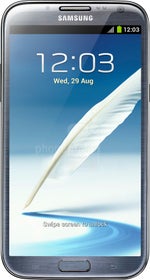







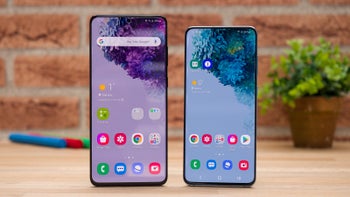


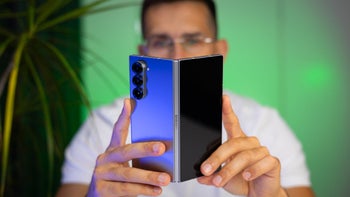









Things that are NOT allowed: